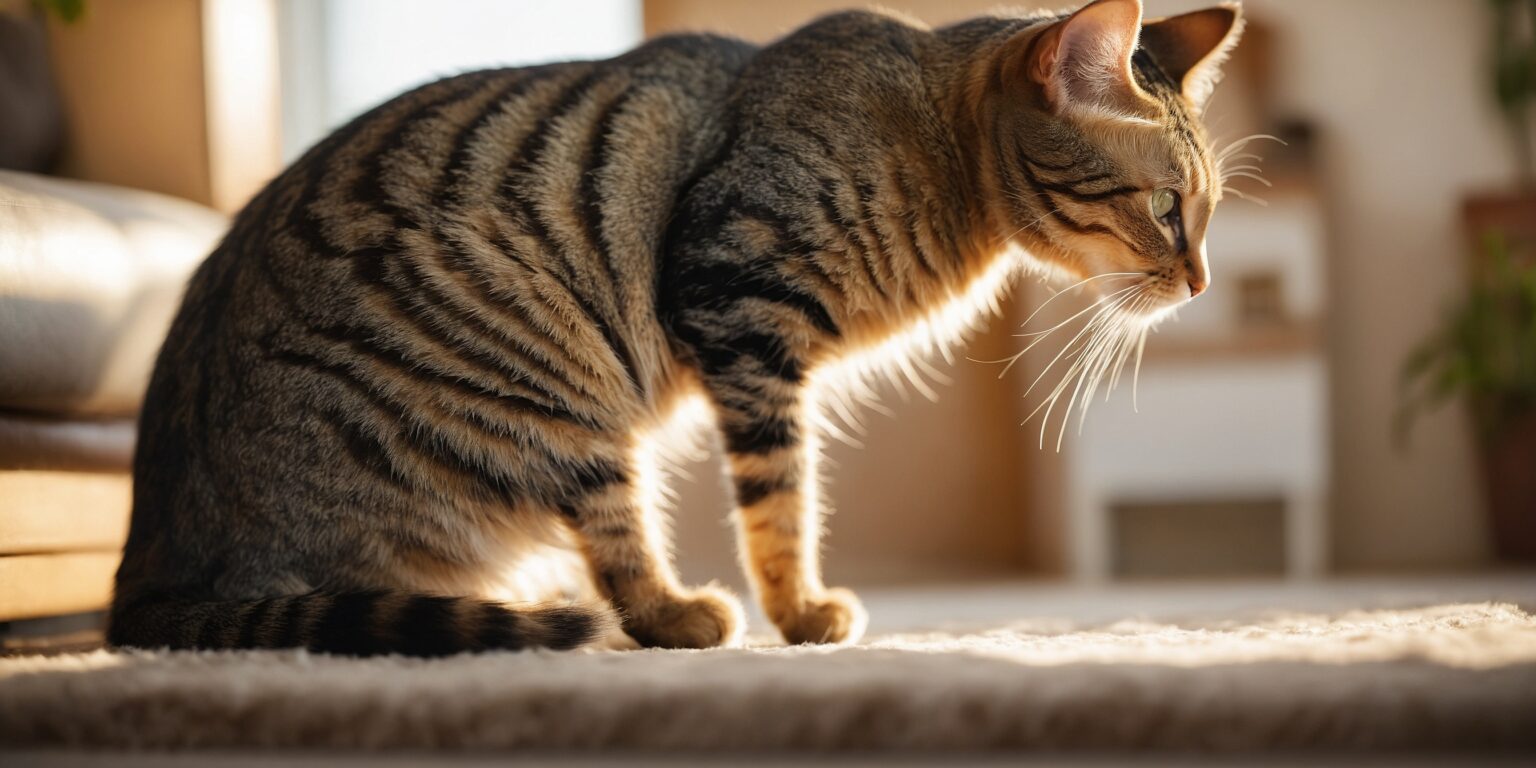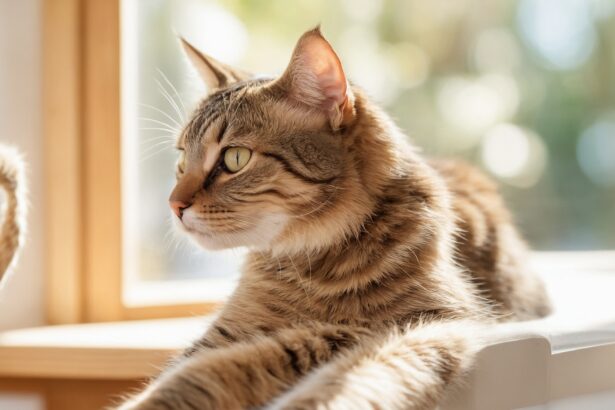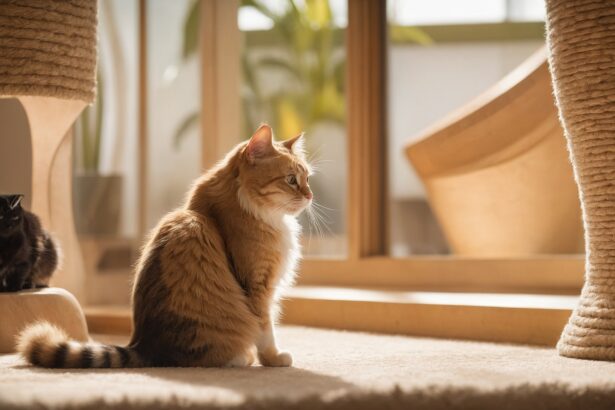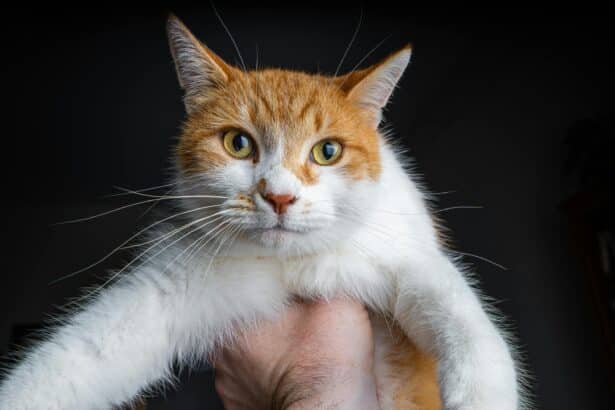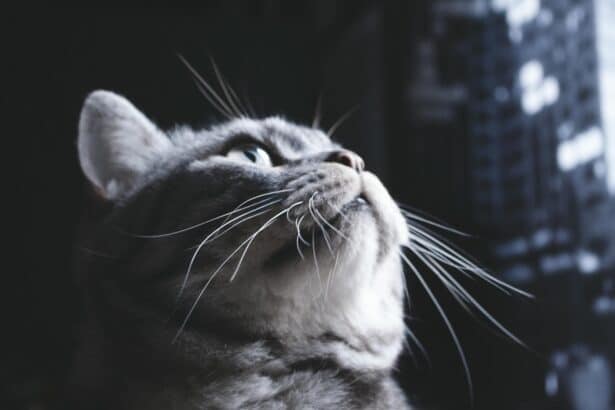Introduction
Ever noticed your cat lift their behind the moment your hand reaches the base of the tail? Cute, a little cheeky, and very meaningful. Let’s decode why cats raise their behinds when you pet them—and how to respond like the purr-fect partner they believe you are.
- Introduction
- What it means when your cat raises their behind
- Trust wrapped in a tiny wiggle
- A sweet invitation to keep the cuddles coming
- A kittenhood reflex that lingers
- The biology behind the butt-lift
- A nerve-rich zone that feels fantastic
- Pheromones: your cat’s gentle “signature”
- Polite feline etiquette, cat-to-cat
- How to respond (and keep it comfy)
- When the butt-lift isn’t just about cuddles
- Other affectionate signals you might see
- Quick recap
- FAQ
What it means when your cat raises their behind
Trust wrapped in a tiny wiggle
Offering the rear is feline for “I feel safe with you.” That area is vulnerable, so this move is a tiny ceremony of trust and affection. It’s also why many cats greet their favorite humans with a proud tail and a gentle lift.
Fun fact: many people call it the “elevator butt.” It’s common, normal, and oddly adorable.
A sweet invitation to keep the cuddles coming
That lift often says, “Right there—don’t stop!” Your cat is guiding your hand toward a spot that feels especially good. Try short, gentle strokes at the tail base, then pause to let your cat ask for more.
Curious about another post-petting quirk? Here’s why some cats immediately groom after you pet them: why some cats lick their behinds right after cuddles.
A kittenhood reflex that lingers
Kittens lift their hindquarters so mom can groom them, and the reflex often sticks into adulthood. That’s one reason the gesture feels so natural to your cat.
Note: Intact females in heat may raise their behinds and tilt the tail aside—very different context, but the posture can look similar.
The biology behind the butt-lift
A nerve-rich zone that feels fantastic
The base of the tail is packed with nerve endings, which is why the lightest touch there can trigger a reflex lift. It’s pleasant—until it isn’t. Overstimulation can happen fast, so keep strokes short and soft.
Pheromones: your cat’s gentle “signature”
Cats have scent glands around the tail area. When they lift their behind, they may be sharing their unique scent—like a soft, invisible calling card. Every cat’s scent profile is individual.
Want to decode more cozy signals? Here’s the full story behind those rhythmic paws: why cats knead with their paws.
Polite feline etiquette, cat-to-cat
Among cats, presenting the rear is a normal social gesture. It can signal calm intentions and smooth interactions. In multi-cat homes, you’ll often spot the tail lift during friendly exchanges.
How to respond (and keep it comfy)
The right way to react
Follow their lead. Start with two or three light strokes at the tail base, then pause. If your cat leans in, blinks slowly, or keeps the tail high, you’ve got the green light to continue.
Practical tip: Try a “consent test.” Hold your hand still near the tail base. If your cat bumps or nudges into your fingers, continue. If they shift away or tense, change spots.
Reading limits like a pro
Watch for tail whipping, skin rippling, ears turning sideways, or a sudden head turn—these say “I need a break.” Some cats also prefer cheek, chin, or shoulder scratches over the tail base.
To get fluent in tail talk, this guide helps you read those flicks and swishes: cat tail language and what it means.
Mistakes to avoid
- Don’t tap or drum the tail base. It can tip a cat from bliss to overstimulation quickly, and may trigger swatting.
- Don’t chase the tail or “sneak” touches. Sudden moves near a sensitive zone can startle even the sweetest cat.
- Don’t insist if your cat walks away. Consent makes cuddles better for both of you—always let your cat reset.
When the butt-lift isn’t just about cuddles
Discomfort, fleas, or skin irritation
If your cat raises their rear but looks tense, checks the area constantly, or dislikes touch there, look closer. Fleas, skin irritation, or anal gland issues can make the area extra sensitive.
Pain or stiffness
Older cats with arthritis may guard their lower back and tail base. If your cat seems sore, schedule a vet check to rule out pain.
For deeper reading on behavior and wellness, the Cornell Feline Health Center offers trustworthy guidance.
Other affectionate signals you might see
The belly reveal
A cat exposing their tummy is peak relaxation—but not always an invite to touch. Many prefer chest or side strokes instead of a direct belly rub.
Head bunting (those gentle nudges)
When your cat rubs their head on you, they’re sharing pheromones and folding you into their safe circle. Sweet, simple, and deeply reassuring.
Kneading, biscuits, pat-pat
Kneading is a comfort behavior rooted in kittenhood. It’s a sign your cat feels cozy, safe, and content with you. Enjoy the rhythm—and protect your thighs with a soft blanket.
If your cat also licks you during cuddle time, here’s what they might be saying: why your cat licks you.
Quick recap
Behind lift = trust, pleasure, and a nudge for more cuddles. Keep strokes light, pause often, and let your cat choose the pace. If something seems off, check for discomfort or ask your vet.
Surprising extra: some cats give a tiny tail-tip quiver when ecstatic—it’s a happy squeal in tail language.
FAQ
Is it normal if my cat always raises their behind when I pet them?
Yes—many cats do! It usually means they trust you and enjoy that spot. Keep sessions short and watch for signs they need a pause.
Why does my cat present their rear to my face?
It’s feline friendliness and scent-sharing, not rudeness. Gently redirect to a side-cheek scratch if you prefer a little more personal space.
Do spayed or neutered cats still raise their behinds?
Absolutely. The behavior is tied to comfort, scent, and social bonding—not only to mating. Fixed cats commonly show it during happy petting.
When should I worry about sensitivity at the tail base?
If your cat acts painful, avoids touch, shows skin twitches, or overgrooms the area, contact your vet. Fleas, skin issues, or anal gland discomfort may be involved.


